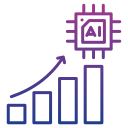Integrating IoT with Smart Devices for Greater Efficiency
Welcome! Today’s chosen theme is: “Integrating IoT with Smart Devices for Greater Efficiency.” Dive into clear guidance, vivid stories, and practical ideas to streamline workflows, cut waste, and make every connected device pull its weight. Subscribe and comment with your goals so we can shape future posts around your real challenges.

Foundations of IoT-Driven Efficiency
Efficiency starts with good data. Sensors capture context, gateways normalize signals, and cloud services enrich insight. When each layer speaks clearly and reliably, actions become timely, automated, and genuinely useful.


Real-World Story: A Small Office Transforms in 30 Days
A five-room design studio linked occupancy sensors, thermostats, and plug-level meters. Within a week, predictive alerts replaced manual checks, preventing after-hours waste and flagging misconfigured devices before staff even noticed.
Real-World Story: A Small Office Transforms in 30 Days
By automating schedules and adapting to real occupancy, monthly costs dropped twelve percent. Employees reported steadier temperatures and fewer distractions, proving efficiency can feel more comfortable, not restrictive or inconvenient.

Edge vs. Cloud: Where the Intelligence Lives
Move fast decisions to the edge to reduce lag and bandwidth. Keep historical analysis in the cloud for scale and collaboration. A thoughtful mix minimizes costs without sacrificing insight.

Standards and Ecosystems that Accelerate Integration
Emerging standards like Matter and Thread emphasize secure onboarding and reliable interoperability. Adopting them early helps devices collaborate smoothly, shrinking integration time and unlocking more efficient automations.

Metrics That Matter for Efficiency
Pick a handful of KPIs: kilowatt-hours saved per week, response time to anomalies, avoided downtime hours, and automation accuracy. Simple, relevant numbers keep teams focused and engaged.
Metrics That Matter for Efficiency
Measure a baseline for two weeks, then introduce one change at a time. A/B test schedules or thresholds, compare results, and keep only what improves comfort, reliability, and savings.
Metrics That Matter for Efficiency
Dashboards should highlight exceptions, not overwhelm. Use trend lines, comfort bands, and alerts tied to goals. Share wins visibly so colleagues feel motivated to contribute ideas and feedback.
Start Small, Integrate Deep
Choose one room, one workflow, or one process. Connect lights, occupancy, and thermostats together with clear rules. Document everything, then invite comments so improvements happen faster.
Pilot Ideas for Homes and Workplaces
Try adaptive lighting, plug-level load shedding, leak detection, or predictive maintenance on shared equipment. Each pilot should have a clear goal, a time box, and a success threshold.
Join the Conversation and Share Results
Leave a comment describing your current setup and one efficiency goal. Subscribe for weekly experiments, templates, and checklists, and tell us which pilots you want tested next.
